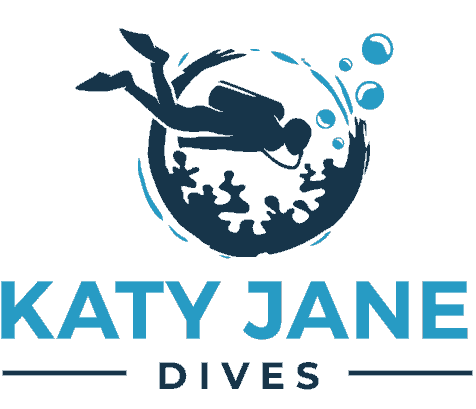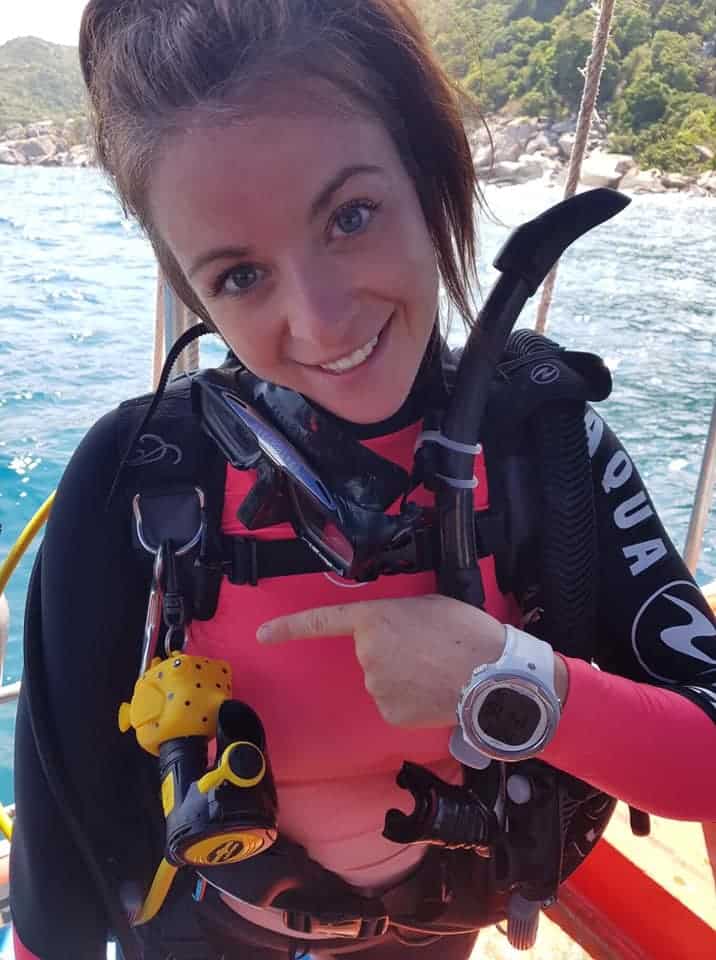The Philippines, an archipelago of over 7,000 islands, is a diver’s paradise. With its vibrant coral reefs, diverse marine life, and crystal-clear waters, it’s no wonder that diving in the Philippines is a bucket list experience for many.
Here, we explore seven of the most popular dive locations that are frequently searched by divers worldwide, and which one is my personal favourite!
Table of Contents
Best Dive Sites in the Philippines
- Tubbataha Reefs National Park
- Apo Reef
- Malapascua Island
- Coron Bay
- Anilao
- Puerto Galera
- Moalboal
Most of the dive sites listed in this article are found in Palawan. Often hailed as one of the most beautiful islands in the world, it offers some of the best scuba diving experiences in the Philippines.
Tubbataha Reefs National Park
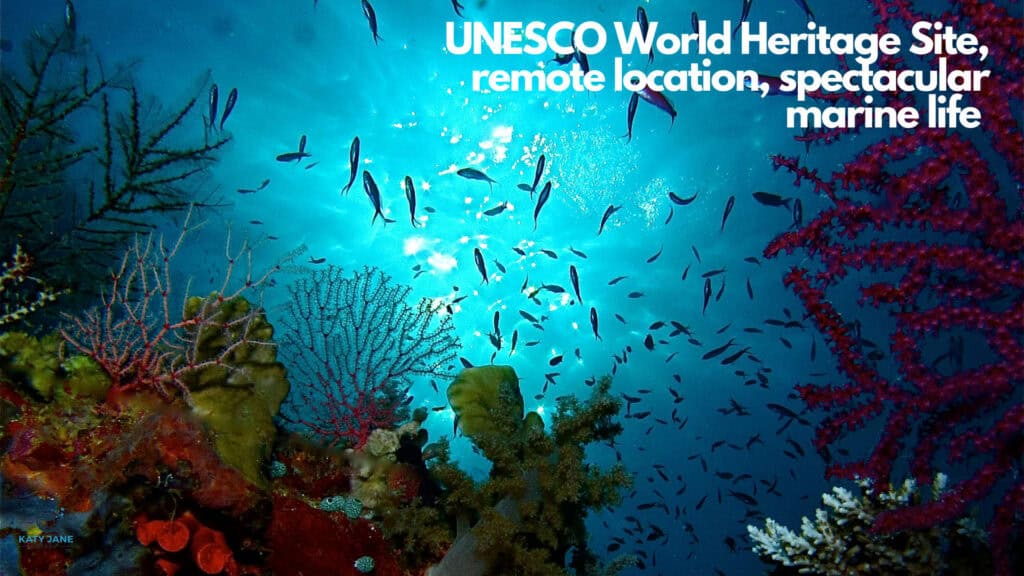
- Location: situated in the centre of the Sulu Sea, about 93 miles southeast of Puerto Princesa City
- Perfect For: Suitable for intermediate to advanced divers
- Likely to See: Whale sharks, manta rays, dolphins, turtles, macro life, schooling fish including tuna, trevally and barracuda
- Temperature: 27°C to 30°C (86°F)
- Visibility: 20-40 metres
- Depth: 5 - 40metres
Tubbataha Reefs, located in the Sulu Sea, is a UNESCO World Heritage Site renowned for its stunning, and probably unrivalled, biodiversity.
Diving here, you’ll encounter everything from massive schools of fish and colourful corals to large pelagics and unique encounters with species like whale sharks and sea turtles. The best time to visit is from March to June when the seas are calm and visibility is at its peak.
Due to its remote location, you can only access this National Park by a liveaboard.
Apo Reef
- Location: in the Mindoro Strait between the islands of Mindoro and Coron
- Perfect For: Suitable for intermediate to advanced divers
- Likely to See: steep coral reef walls, large schools of fish, range of shark species including white tips, black tips, threshers and hammerheads
- Temperature: 26°C to 30°C
- Visibility: 15 meters to 40 meters
- Depth: 5 - 40+ meters
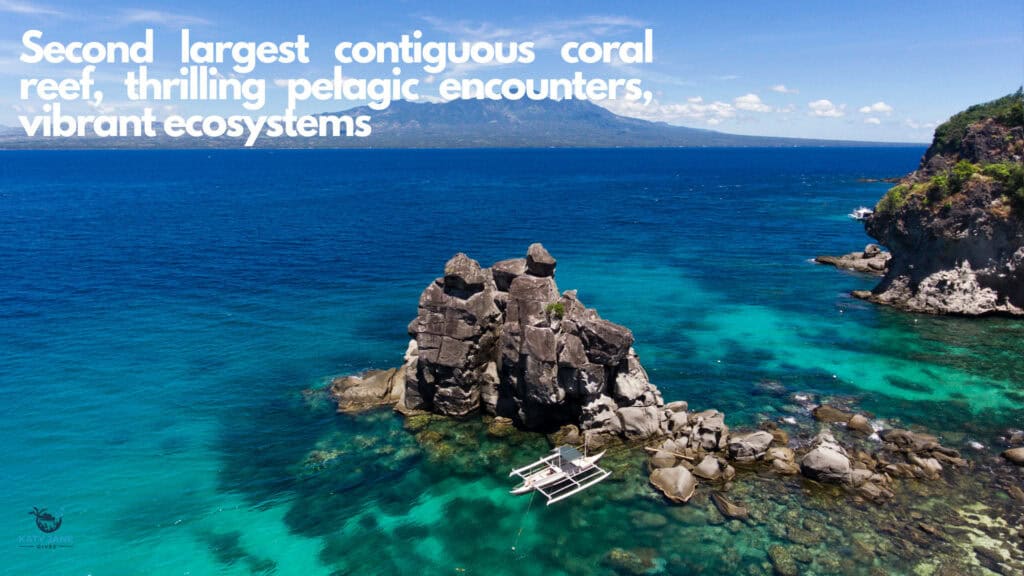
Apo Reef, the second-largest contiguous coral reef in the world, offers a thrilling diving experience.
With its deep walls, diverse coral species, and abundant marine life, it’s a haven for underwater photographers and adventure seekers. Sharks, rays, and turtles are common sightings here, making every dive an exciting adventure.
Malapascua Island
- Location: situated off the northern tip of Cebu
- Perfect For: Suitable for beginner - advanced divers
- Likely to See: thresher sharks, white tip reef sharks, tuna, barracuda, sea snakes, macro life including mantis shrimp and mandarinffish
- Temperature: 26°C (79°F) to 29°C
- Visibility: 5 metres to 25 metres
- Depth: 5-40+ metres
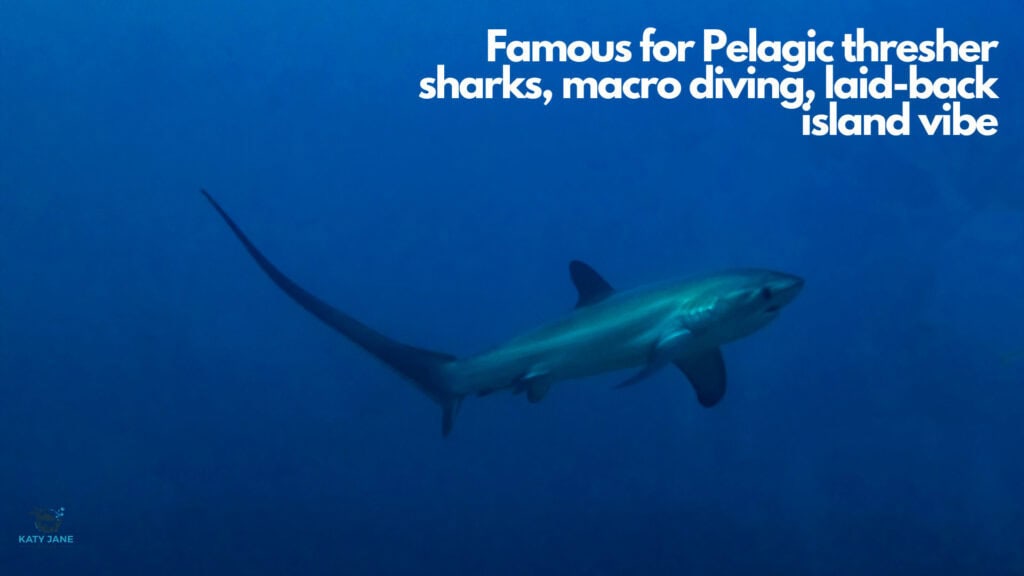
Malapascua Island, located off the northern tip of Cebu, is world-famous for its thresher sharks – my personal favourite!
These elusive creatures can be seen almost daily at Kimud Shoal, a cleaning station where the sharks come early in the morning. Diving with these pelagic species is such a privilege. I spent a dreamy ten hours plus in their presence and it was like no other dive experience I have had.
In addition to thresher sharks, Malapascua offers excellent macro diving with nudibranchs, pygmy seahorses, and other critters.
Find out what it’s like diving with Thresher sharks in Malapascua – this is one not to be missed!!
Coron Bay
- Location: situated in the western Philippines
- Perfect For: Suitable for all diving levels
- Likely to See: WWII wrecks, caves, dugongs, barracuda, triggerfish, groupers, nudibranchs
- Temperature: 27°C to 30°C
- Visibility: 5 metres to 20 metres
- Depth: 5 - 40+ metres
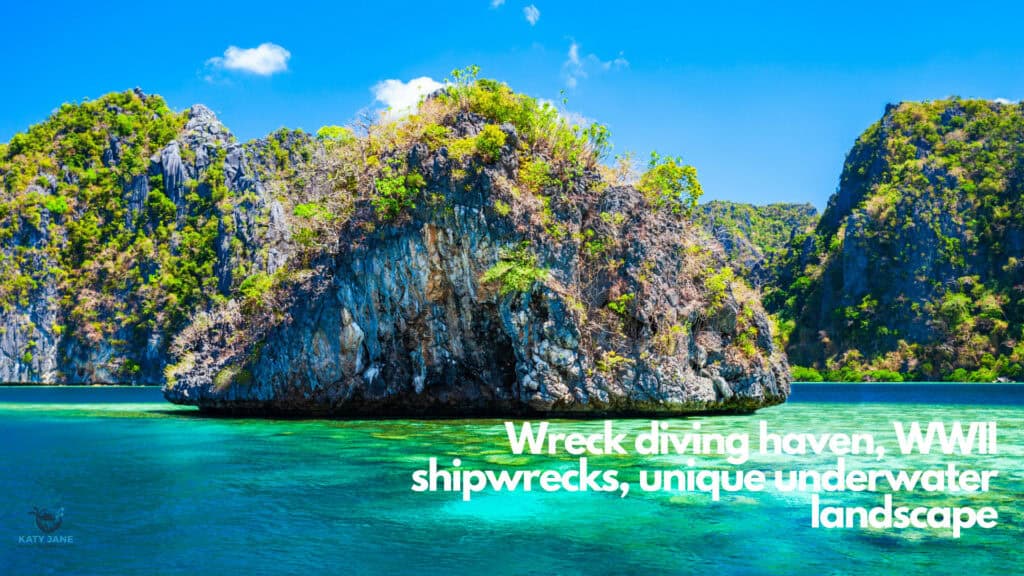
For wreck diving enthusiasts, Coron Bay is a must-visit destination.
The bay is home to several Japanese shipwrecks from World War II, now teeming with marine life. Each wreck tells a story and offers a unique diving experience, with opportunities to explore the ship’s interiors and witness the fascinating transformation of these vessels into artificial reefs.
Anilao
- Location: situated at the southern end of the Calumpang Peninsula
- Perfect For: Suitable for beginner to advanced divers
- Likely to See: huge range of macro life, schooling fish, some large pelagics
- Temperature: 27°C to 30°C
- Visibility: 10 metres to 30 metres
- Depth: 5-40 metres
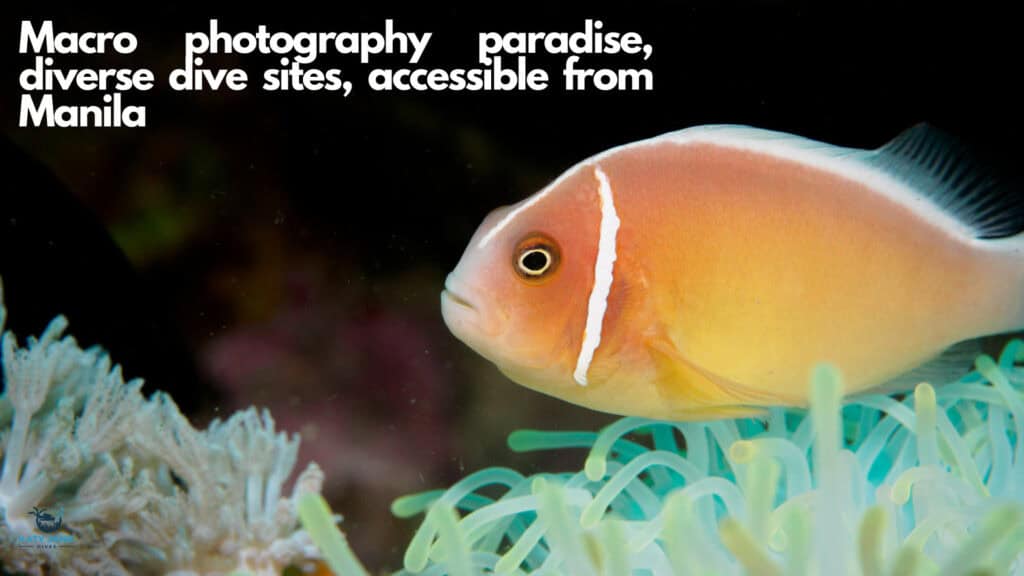
Anilao, just a few hours’ drive from Manila, is a hotspot for macro photographers.
Its dive sites are renowned for their rich variety of nudibranchs, frogfish, and other macro critters. The vibrant reefs and clear waters make it an ideal spot for both beginners and experienced divers looking to capture stunning underwater shots.
Puerto Galera
- Location: northern tip of Oriental Mindoro
- Perfect For: Suitable for all diving levels
- Likely to See: wrecks, schooling reef fish, healthy corals, giant frogfish, seahorses, turtles, cuttlefish
- Temperature: 26°C (79°F) to 30°C (86°F)
- Visibility: 10 metres (33 feet) to 25 metres
- Depth: 5 - 30 metres
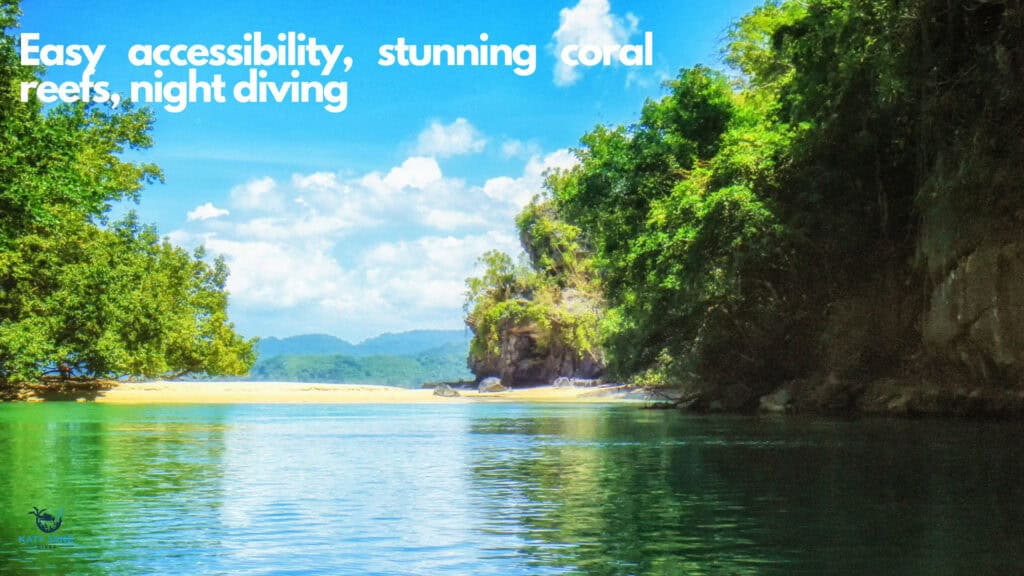
Puerto Galera, located on Mindoro Island, boasts some of the most accessible and diverse and vibrant marine life in the Philippines.
With its beautiful coral gardens, abundant wildlife, excellent underwater visibility and exciting night dives, Puerto Galera offers something for every diver. The currents here also make it a great spot for drift diving.
Moalboal
- Location: situated in the heart of the Visayas region
- Perfect For: Suitable for all diving levels
- Likely to See: turtles, schooling fish, mandarinffish, giant frogfish, walls and pinnacles
- Temperature: 26°C (79°F) to 30°C (86°F)
- Visibility: 10 metres (33 feet) to 30 metres
- Depth: 5 - 35+ metres
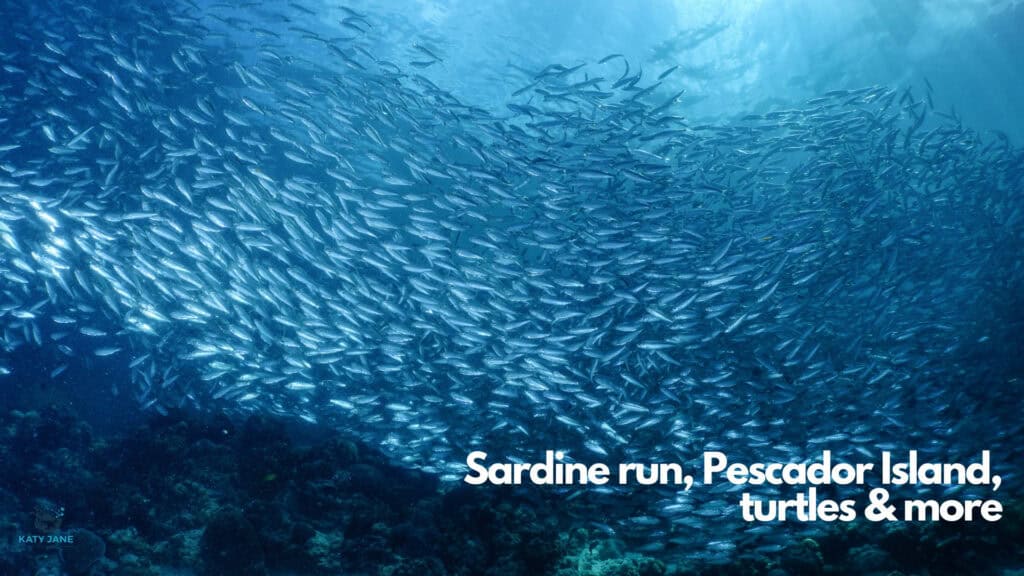
Moalboal, situated on Cebu’s southwest coast, is famous for its sardine run.
Diving alongside millions of sardines as they swirl in unison is an unforgettable experience. Nearby Pescador Island offers stunning wall dives, while Turtle Bay is a favourite for encountering friendly sea turtles.
What are the Diving Conditions Like?
Diving conditions in the Philippines are excellent. Water temperatures range from 26°C to 30°C, making it comfortable for diving year-round.
Visibility can exceed 30 metres in many locations, particularly during the dry season from November to June. However, conditions can vary with the seasons. The wet season (July to October) brings more rain and potentially rougher seas, but it can also mean fewer crowds and more vibrant marine life due to nutrient-rich waters.
What is the Best Time to Dive in the Philippines?
The best time to dive in the Philippines is during the dry season, which runs from November to June.
The peak diving months are from March to June when the seas are calm and visibility is excellent, often exceeding 30 metres. However, diving is possible year-round.
Best Way to Travel Around the Philippines
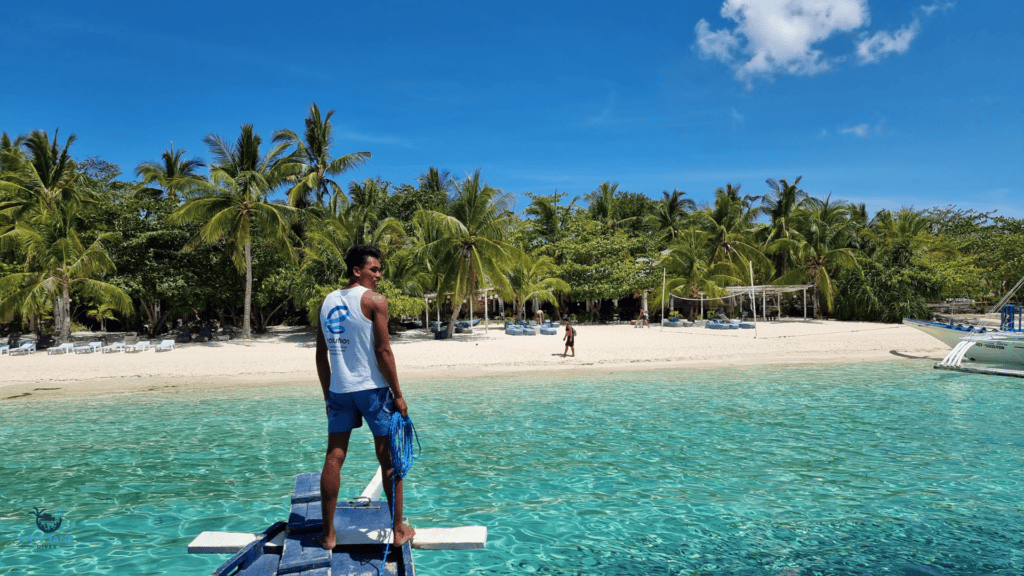
Travelling around the Philippines can be an adventure in itself.
Domestic flights are the quickest way to hop between islands, with major carriers like Cebu Pacific and Philippine Airlines offering frequent services.
We flew with Cebu Pacific and, to be honest, were not that impressed with their customer service. We ended up paying extortionate baggage fees at the airport because their app did not allow us to pre-book baggage. Just a heads up if you are considering booking with them!
Ferries and fast crafts are popular for shorter distances, while local transportation options like jeepneys, tricycles, and buses provide an authentic travel experience.
What is Liveaboard Diving Like in the Philippines?
Liveaboard diving is an excellent way to explore the more remote dive sites in the Philippines.
These trips often range from 5 to 14 days, allowing divers to reach places like Tubbataha Reefs and Apo Reef that are otherwise inaccessible. Liveaboards offer a unique diving experience, with multiple dives per day and the opportunity to immerse yourself fully in the underwater world.
They provide a comfortable base for divers, often with all-inclusive packages covering meals, accommodations, and diving activities.
What Kind of Marine Life Can I Expect to See?
The Philippines is renowned for its rich marine biodiversity – marine life thrives in the Philippines. Common sightings include thresher sharks, whale sharks, manta rays, and various species of turtles.
Macro diving is also popular, with numerous nudibranchs, pygmy seahorses, and other critters. Pelagic species like tuna and barracuda can be seen in areas with strong currents.
Wreck dives in places like Coron Bay offer a chance to see how marine life has transformed sunken ships into thriving artificial reefs.
Recommended Dive Operators
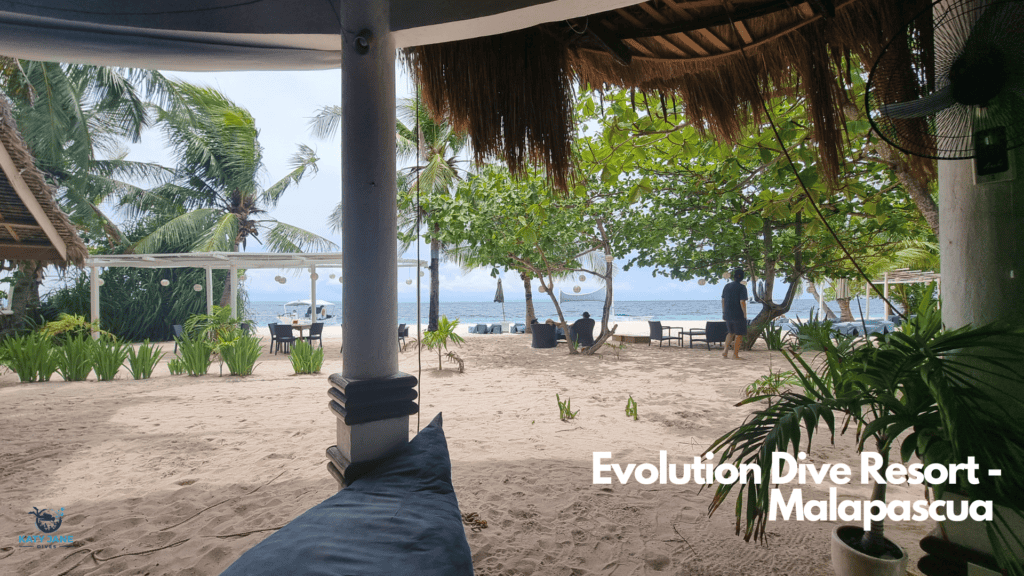
Choosing a reputable dive operator is crucial for a safe and enjoyable experience. Look for operators with strong safety records, well-maintained equipment, and positive customer reviews. High safety standards and professional dive shops should be top of your list wherever you dive. Some highly recommended operators in the Philippines include Dive In El Nido, Fun & Sun Dive & Travel, and Sea Explorers Philippines.
Lots of resorts offer diving packages too, allowing you to book your accommodation and diving together, but be sure to shop around and research online before you go to find the best deals.
If you are heading over to Malapascua to see the Thresher sharks, I would only recommend diving with Evolution Diving. Unfortunately, there are a lot of dive schools on the island that do not encourage eco-friendly practices, letting their divers stand all over the reef, touching coral and just general bad behaviour around the sharks.
Evolution diving are one of the leading dive centres that ensure dive briefings have a comprehensive insight into best diving practices. They are also the only GreenFins certified centre on the island – a good sign that they are engaged in strong conservation efforts and have ocean conservation at the forefront of everything they do.
Conclusion
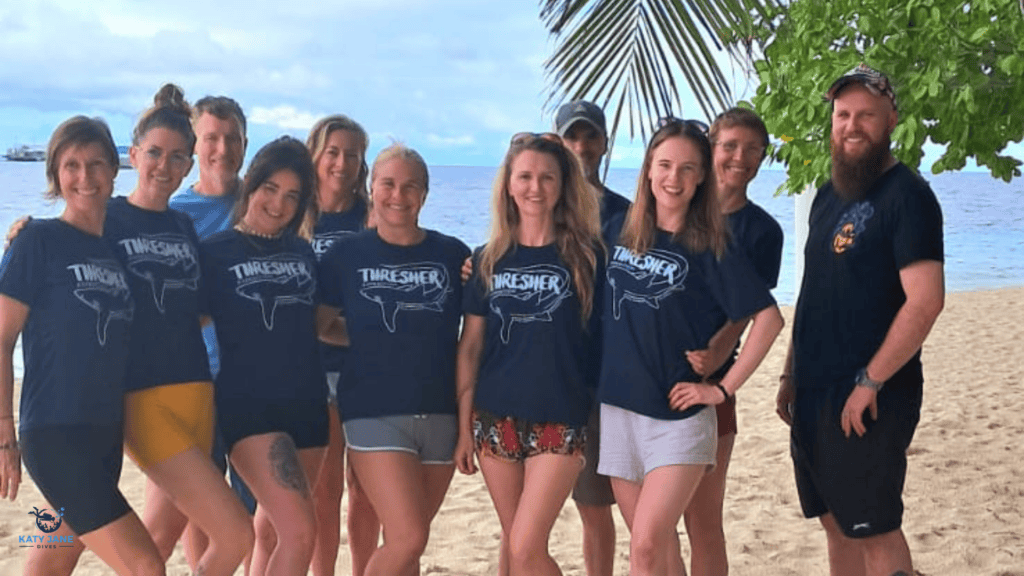
Diving in the Philippines offers an incredible underwater adventure. Whether you’re exploring the remote reefs of Tubbataha, swimming with thresher sharks in Malapascua, or diving into history in the crystal-clear waters of Coron Bay, the Philippines has accessible dive sites for all skill levels.
I loved diving in the Philippines and cannot wait to go back to explore more of the archipelago.
Each location provides a unique glimpse into the rich marine biodiversity that makes this archipelago a world-renowned diving destination. Pack your gear and Pesos and dive into the best that the Philippines has to offer!
Worlds Best Scuba Diving
There is always a new place to visit, a unique place to explore when it comes to scuba diving. Check out some of the other amazing diving locations below.
